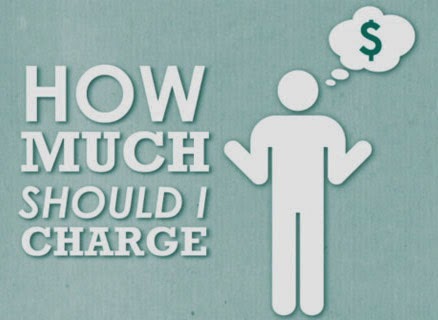
One of the things that musicians, engineers and producers sometimes have trouble with is how much to charge for their time. Here’s an excerpt from The Music Producer’s Handbook that covers the pros and cons of all the alternatives. It’s aimed at producers, but just as applicable to engineers, musicians, and any professional trying to decide how much to charge.
“What if a local band asks you to produce them? What do you charge if they’re not attached to a label? There are a number of approaches that you can take, although none will have you retiring to the Bahamas anytime soon. You can:
- Charge a flat project fee. How much should that be? So much depends upon the type of project, how many overdubs you’ll need, the artist’s or band’s competency, the artist’s or band’s income level, and the number of songs. A jazz or blues band with 20 songs will usually take a lot less time than a pop band with 8 because of the type of music and the layering normally required with pop music. And if the band has a marginal player or two, that can almost double the time spent just trying to get the parts to match the other players in skill level (unless you can persuade them to use a session player.)
Usually, a flat fee is the least desirable way to get paid since projects have a tendency to go a lot longer than anticipated and will tend to drag on and on when the artist realizes that you get paid the same regardless of the time spent. If the flat fee is the easiest way or only way to get the gig, then that’s what you have to do, but otherwise, avoid it if you can unless you’ll very well compensated.
- Charge a per-song fee. This is better than the flat project fee but not by much. All the same problem areas are still there with the exception that it can sometimes cause the artist to scale back from recording 15 songs to 10 (even though it’s a hit in your pocketbook). You won’t have to worry about the artist wanting to record an extra song at the last minute or suddenly wanting to complete a track originally deemed too weak after basic tracking. With a per-song rate, any additional songs and you have to get paid.
- Get paid on spec. This is the way that most fledgling producers start their careers. The deal would be that if the artist or band “makes it” (meaning they get signed by a major label and get an advance), then you’ll get paid either your project fee, points, or both. The chances of that happening are always long no matter how much you believe in the act, so be prepared to spend your time working for free. The one good thing here is that you’ll be gaining experience.
If you’re going to work on contingency, you’ll need to get two things from the artist or band. The first thing is a larger deal than your normal rate to make it worth your while, since you’re specing your time. That could be anywhere from 20 to 50, even 100% more – whatever you can negotiate. You can justify it by saying, “I’m providing a lot of valuable time and expertise that you’re not paying me for right now. Maybe it’ll take a long time to see this money or maybe I’ll never see it. That’s worth an extra premium.”
The second thing is an agreement stating the terms of how much and under what circumstances you’ll get paid. While you should go to an attorney to get this drawn up, this can cost you money that you don’t have or don’t want to spend on a project that may never pay off. Even if it’s only a single page long, just be sure to get it in writing because people have a tendency to forget or remember differently over time and it pays to have something on paper. At the very least, put down what songs you’ve worked on (or going to work on), the amounts agreed upon, and a time frame that you’ll get paid (example – 30 days after signing a major or indie label agreement), and how you’ll get paid (“in full by cashiers check”) just so no one forgets. This may not be legally binding or may have plenty of holes that a high-priced lawyer can drive a truck through, but if the people you’re dealing are on the up and up, you’ll at least have a piece of paper to remind everyone of your contribution to their success and how you all agreed you’d be compensated.
- Charge an hourly rate. The safest way to go as long as you can get paid, an hourly rate means that when you inevitably spend that extra week on overdubs or mixing, you’ll get paid for the time you’re putting in. The hourly rate keeps people focused and stops them from adding those extra 5 overdubs “just to see what they sound like,” or from trying 10 more takes when you all agreed that number 3 was great.
- A combination of the above. Many times payment consists of a little bit of money or a little bit of spec, some items at a flat rate and some at hourly, or some combination. Try not to get too complicated. A simple deal works best for everyone, especially when it comes to getting paid. Just realize that there are a lot of options available.
There are a lot of good books on the subject of how to structure a deal for yourself that are much more comprehensive then what was just laid out above. Even if you decide not to read them, get an attorney if it means any money more than what the attorney will cost. At the very least, always get it in writing.”

